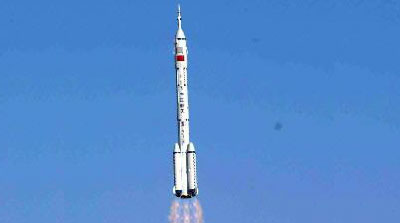Not so innocents abroad: China returns to the International Astronautical Congressby Dwayne A. Day
|
| In its early days the IAF was virtually the only way that Western scientists and engineers—and spies—were able to meet their counterparts from behind the Iron Curtain. The spirit of brotherhood was accented with a whiff of espionage. |
Having attended several of these conferences over the past decade or so, it has been interesting to observe how they reflect the evolution and health of the government space sector—when money was plentiful, the exhibition halls were big and packed, and aerospace contractors passed out lots of great swag (I remain jealous of a colleague who once got a stuffed Delta 3 rocket, complete with a cartoon face). When budgets got tighter the contractor displays were less lavish and the swag disappeared. International politics is also reflected in the conferences. But often the changes are subtle, found in both the sessions and the exhibit hall.
One of the more democratic characteristics of IAF is that the panel chairpersons are usually not very discriminating when it comes to accepting papers for presentation. Practically anybody can present on any subject that loosely fits into the topic of a session, and there is almost no screening for quality, accuracy, or originality. Some attendees use the conference as a trial run for a paper that they intend to present at a more serious conference, many others as an excuse to go to an interesting city and drink the local libations on a government expense account. Officially the speakers are supposed to be able to speak English, and officially they are supposed to provide 100 copies of their paper or they will not be allowed to take the lectern. However, the IAF is not going to turn away a Chinese speaker who traveled 5000 kilometers to the conference just because he has no access to a Xerox machine in his home country and only speaks Mandarin. The result is papers with titles like “Application of 35 in Integrated Information System of City Ecology of Digital Beijing,” delivered in a language that is almost, but not quite, entirely unlike English.
There is a popular view at IAF that international cooperation in space is good for its own sake. This is reflected in some of the papers and the proceedings, at least the ones dealing with policy and law. This internationalist attitude is common not only among Europeans, who need to cooperate simply to get the critical mass to even have a space program, but among many American attendees as well. Often they propose cooperative efforts without a firm grasp of the politics of space programs, not realizing that space activities are often fueled by national self-interest more than any other motivation. But realpolitik is visible throughout the conference, if only one knows how to look for it.
The World Space Congress of 2002 was supposed to be a breakout event for the Chinese, with significant numbers of Chinese space representatives delivering papers, and many more attending the sessions. China was trying to make a bold splash on the world stage as the major new space power prior to their first manned space flight. Although most of the papers that their delegates were presenting were not very interesting, a few, such as discussions of the heat shield and experiments on the manned Shenzhou spacecraft, were intriguing.
Alas, it was not to be. American security concerns after September 11, and the hidebound bureaucracy of the State Department, meant that many of the visas for Chinese delegates were delayed, and they did not attend or bring their papers. Then again, many of the Chinese were probably traveling to Houston for the same reason that Americans and Russians attended the IAF conferences in the 1950s, to gather as much information as possible on what the other guys were up to.
| The World Space Congress of 2002 was supposed to be a breakout event for the Chinese. Alas, it was not to be. |
In fact, the Chinese space pavilion in the exhibition hall during Houston’s World Space Congress was probably a good indicator of their real intentions. Instead of literature explaining their new Shenzhou spacecraft, their rockets, and their ambitious space plans, they had a single brochure primarily devoted to their space bureaucracy—lots of photos of grim bureaucrats in cheap suits staring at the camera before some meeting on the Peoples’ Republic Five-Year Plan for Liquid Hydrogen Production. The pavilion itself was big, square, and had several little rooms where visitors could be taken for private meetings and nobody could see them. In contrast, in the early 1990s the Chinese were marketing their Long March launch vehicles to loft western comsats into orbit and they gave out brochures on their rockets and engines, trading information for dollars. By 2002 they probably planned to do the opposite.
From a review of the accepted papers list for the conference, the Chinese appear to be back, presenting many of the same papers that the U.S. State Department would not let them present back in 2002. Vancouver is apparently more open to Chinese communists than Houston was two years ago. They chose to skip the 2003 conference, which was held in Europe.
Unfortunately, they do not appear to be saying much about Yang Liwei’s 2003 flight or their future manned spaceflight plans, at least not in any of the formal sessions. But they will probably have a pavilion, with little meeting rooms. And if you walk around it, you might just be able to detect a little tinge of espionage in the air.
